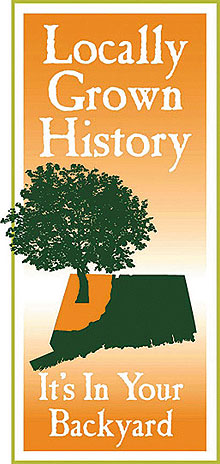  |
| HOME | THIS ISSUE | CALENDAR | GRANTS | BACK ISSUES | < BACK | NEXT > |
Torrington professor leads project promoting local history by Karen A. Grava - September 8, 2008 | ||||
| A project designed to give the public a new, enticing view of Litchfield County’s historical treasures, and to help educators and public historians use the region’s historic sites effectively is now underway. The project, “Locally Grown History – It’s In Your Backyard,” is led by Robert Forbes, an assistant professor of history at the Torrington campus, who organized a group of educators, directors, curators, and volunteers from many local historic and cultural organizations to collaborate on the event. “Northwest Connecticut is a treasure trove of historical gems. We want to help make the public aware of them, and to guide educators in how to teach with them,” says Forbes. “Locally Grown History is an opportunity to bring educators and public historians together to explore the most effective and interesting ways to reach students with these irreplaceable sites and artifacts.” Since Litchfield County is geographically large, the project packages the area’s historical assets (historical societies, museums, historic sites, and traditional artisans) and agricultural resources (vineyards, orchards, farms, farmers markets, and farm stands) into a “trail” so that visitors can easily move from one to another as a day or weekend destination. “While many of the sites that are part of this project are exceptional, only a few constitute a destination in and of themselves,” says Forbes. “Viewed collectively, however, the whole is far greater than the sum of its parts.” He notes that the project hopes to create a revenue base for the historic sites and build networks among personnel at the sites for problem-solving, sharing ideas, and obtaining resources. At the same time, it aims to help re-brand Northwestern Connecticut as a vibrant tourist destination and cultural site on a par with Massachusetts and New York – not just a pretty passage between them. “This project will provide itineraries that are both geographical and thematic for tourists and provide a fuel-conserving alternative to distant travel,” Forbes says.
“When the sites are viewed as stories – many of them related to each other – rather than as individual places, they become much more interesting to the public. This is where scholars can be helpful: locating the sites in a larger context and drawing the connections among them.” The project also encourages integrating the historical resources with educational programs at institutions from K-12 to higher education. “Locally Grown History” began on Labor Day and features prizes for people who visit the sites and keep track of the visits on “passports.” It culminates on Oct. 18 and 19 with special exhibits and a forum on the Torrington campus that will include workshops and panel discussions. The program on Sunday, Oct. 19 will include addresses by Connecticut State Historian Walter Woodward, an assistant professor of history, and by Carl Nold, president of Historic New England. There will also be workshops on the use of historical letters and the impact of geography, religion, and immigration on the state, and a roundtable discussion on “Teaching with Local Treasures: The World in Your Backyard.” For more information about Locally Grown History, visit http://www.locallygrownhistory.org or contact Melissa Flaherty at 860-626-6802. |
| ADVANCE HOME UCONN HOME |

